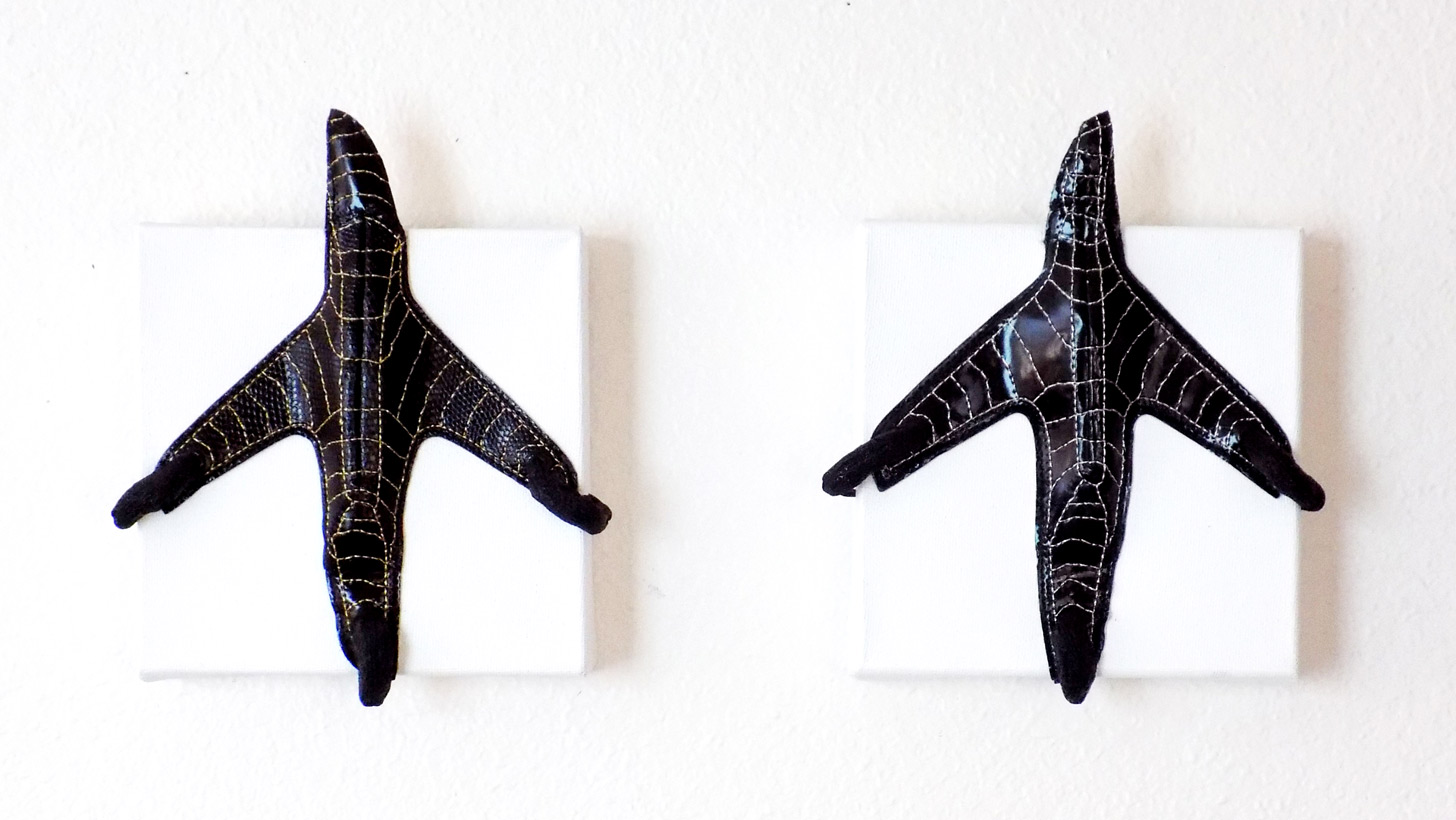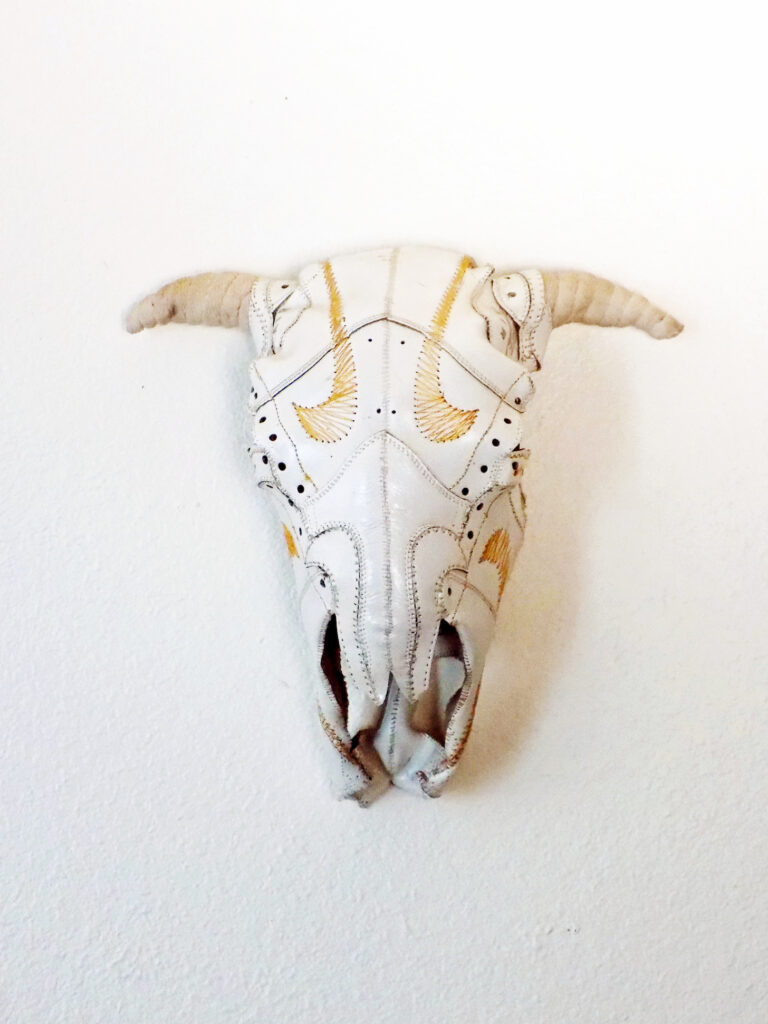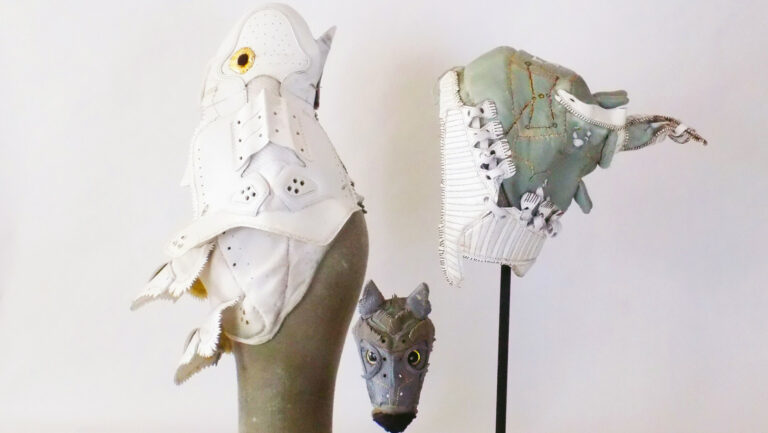Culture Shock: Places Of Worship
Sean Paul Gallegos Works In Transformation And Self-Definition


"Two-horned One," by Sean Paul Gallegos. Discarded sneakers, thread and laces, 2015
Sean Paul Gallegos

"Apkallu Mitre, El Lobo Solitario and Canis Major Lid," discarded sneakers, thread,leather and laces, 2018. New work by Sean Paul Gallegos
Sean Paul Gallegos








